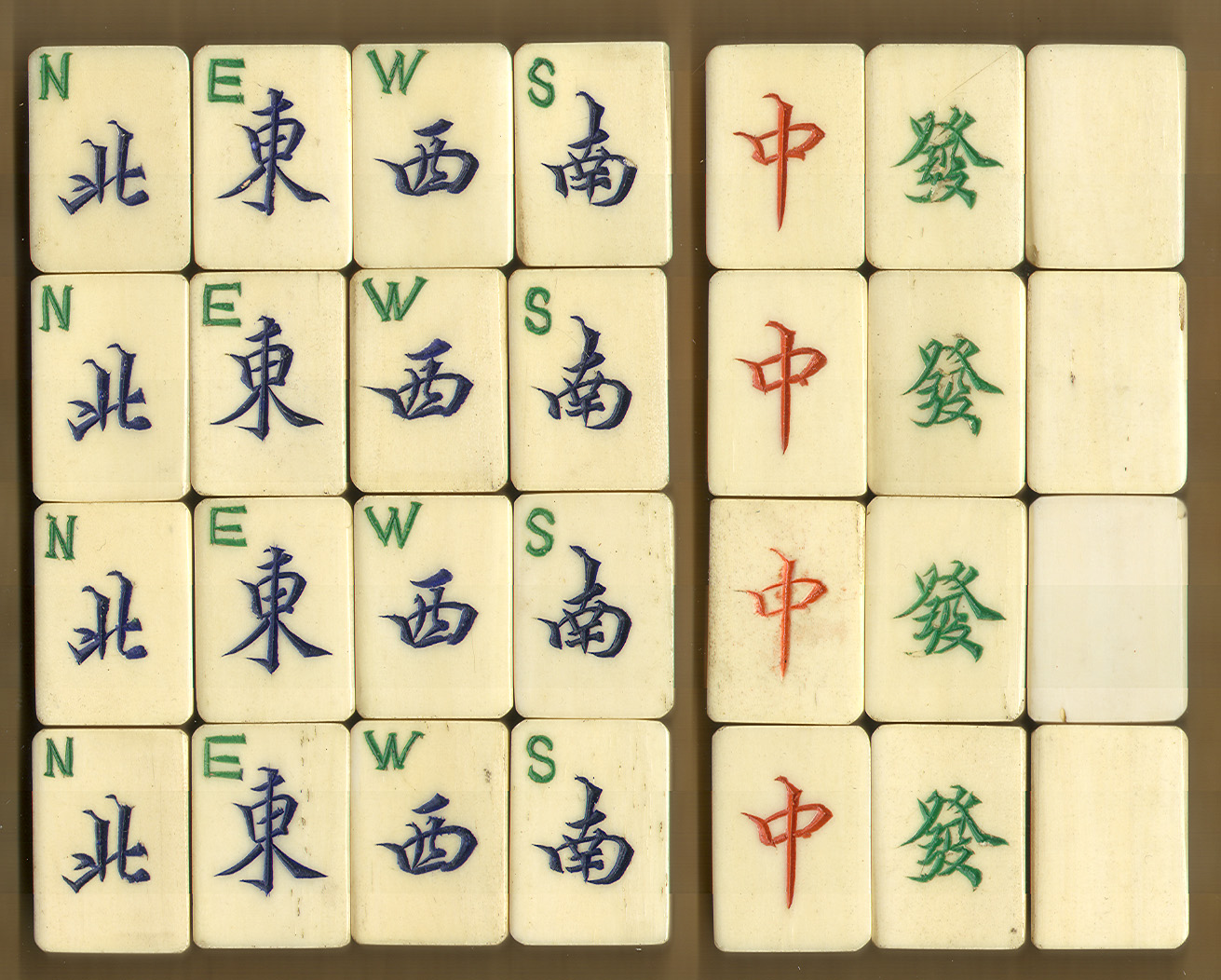These Flowers are from the set discussed yesterday. The color palette is somewhat muted, with softer greens. Interestingly there is a 4th color which we often see on these thick bone sets, a burgundy perhaps made by mixing the blue and the red.
Ray Heaton has once again translated and interpreted the tiles
"They are two stories from the book The Romance of The Three Kingdoms.
Bottom set are 琴退司馬, Qin, Tui, Si, Ma. The first character looks more like 琹, which is the same as (a variant of) the first one I have shown.
Qin, the Guqin, a musical instrument often called the zither or lute.
Tui, to retreat
Si, to take charge of, or the surname Si
Ma, horse, or the surname Ma.
The last two make the name Sima, this is Sima Yi from the Three Kingdoms
This is better known as the Empty City Ruse and is where Zhuge Liang (great military strategist persuaded to join the cause of the three sworn brothers to return the Empire to its rightful dynastic rule) fools Sima Yi into believing the apparently empty city is a trap.
Sima Yi is the military strategist of one of the opposing armies.
Following the Shu defeat at the Battle of Jieting, Zhuge Liang retreated with a small garrison force to Xicheng but was exposed to being attacked by the much larger overwhelming forces of the Wei army led by Sima Yi. In the face of disaster, Zhuge Liang came up with a ploy to hold off the approaching enemy.
Zhuge Liang ordered all the gates to be opened and instructed soldiers disguised as civilians to sweep the roads while he sat calmly above the city gate playing his guqin. When the Wei army led by Sima Yi arrived, Sima was surprised by the scene before him and he ordered a retreat after suspecting that there was an ambush inside the city. "
If you see Flowers with people holding brooms, and a man on the wall, it is almost certain they refer to this beloved story from Romance of the Three Kingdoms.
"The top set say 智取四川, Zhi Qu Si Chuan
The first two mean "to take by strategy" and the second two are Sichuan (a southern province in China). I'm taking this to mean in part that the capital city of the Shu empire, Chengdu (which is now the capital city of Sichuan province) was captured through the strategic advice of Zhuge Liang rather than by force. You can equate Sichuan with the Shu Kingdom. The "strategy" here probably refers to the Longzhong Plan, and so the tiles may well be referring to the establishment of the Shu kingdom, rather than specifically to its capital.
Sichuan province was called the Yi Province and is referred to in the Three Kingdoms as here...
http://en.wikipedia.org/wiki/
...the Longzhong Plan was developed by Zhuge Liang to establish the Shu Kingdom under Liu Bei (the Shu, Wei and Wu are the three Kingdoms within the story) as a precursor to the reunification of China under the Han dynasty. (A plan that eventually failed in the longer term, as the Han was not restored).
http://en.wikipedia.org/wiki/
The Romance of the Three Kingdoms was written in the 14th Century, and is a historical novel with more than 1,000 different characters and 800,000 words. For more information about the book, please click
http://en.wikipedia.org/wiki/Romance_of_the_Three_Kingdoms
The Winds seem to have a certain flair, and the green and blue colors are lively. The Dragons are the traditional Chinese Characters.
Our thanks to the people at Mahjongmahjong for providing these photographs. To see more treasures from their collection, click here
To see another version of Ruse of the Empty City previously discussed on this site, click here


